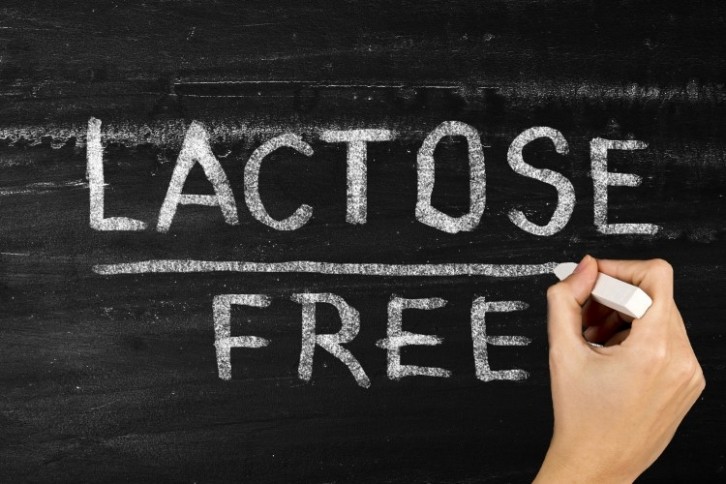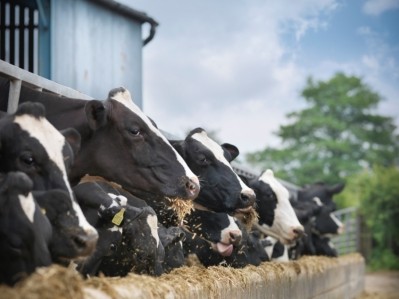Lactose-sensing tech maker finds niche in obesity-related diagnostics

Austria-based biosensor manufacturer DirectSens GmbH specializes in high-precision sensing technology for the dairy industry. In particular, the company’s LactoSens and OatSens lactose and sugar analysis tools enable manufacturers to quickly and precisely identify the level of lactose and glucose and maltose, respectively, during batch testing. Results are out within minutes, and both devices have been externally-certified to confirm their effectiveness and reliability1.
“LactoSens is optimized for detecting low levels of lactose in dairy products whereas OatSens is the first rapid onsite method for detecting glucose and maltose in oat drinks,” explained David Stadler, innovation manager at DirectSens. “Both methods are already established in industry [and] can be used onsite – for example, on the production floor and run by operators without lab skills. The sample preparation is a simple dilution with a ready to use provided buffer. And the results are ready within 3 minutes being as accurate as gold standard method ion-chromatography.”
Here's how it works: the person carrying out the test needs a ‘reader’ device, such as a QR code scanner, as well as a computer and the biosensor assay kit (including biosensors, buffer), pipettes and tips and vials. The dairy or oat product is diluted with dilution buffer; the reader and QR code scanner are connected with the computer, and the software is started. After scanning the QR code, the sensor is inserted into the reader, the diluted sample is applied to the sensor, and after a minute, the result is displayed.
“LactoSens can be used for all different types of dairy products from liquid (like milk) to semi solid (e.g. yoghurt, cream cheese) or solid (cheese), powder, also products containing flavours (e.g. milk coffee) or fruit preparations (fruit yogurts),” added Stadler.
But how difficult is it to ensure lactose-free dairy is truly lactose-free?
“Depending on the country, there are different lactose free levels established - some by law, some by industry and consumer demands,” Stadler said. “In Europe, most producers of lactose free dairy products stick to the 0.01% level although there is no official regulation in place.
“The allowable level for not causing effects differs individually also depending on the portion size.”
Lactose-free milk typically contains a lot of glucose and galactose - about 2.4 % each – as a result from the hydrolysis of lactose.
“The hydrolysis process is influenced by different parameters like initial lactose concentration, temperature, concentration of lactase enzyme, time as well as human errors during production process,” he added. “The only way to make sure that the dairy products are lactose is testing the final product for batch release.”
Besides LactoSens, several other methods for testing low-lactose exist, but these show interference with the high amounts of monosaccharides (glucose, galactose) or other matrix components and thus aren’t as accurate, we were told.
While testing lactose levels is important to ensure a product is suitable for consumption by those with an intolerance, oatmilk makers have another issue: controlling the levels of sugar.
“During oat drink production, starch is mainly hydrolyzed to the sugars glucose and maltose,” Stadler explained. “These two sugars determine the sugar content and are crucial for the sweetness of an oat drink.
“As consumer preferences are very diverse, there are many different variations and combinations of sugar levels. For sugar-free oat drinks, the overall level should not exceed 0.5% (depending on local regulations) whereas regular oat drinks show up 6 or 7% of sugar, or even more. The sugar profile can vary from high-glucose levels, which give a very sweet taste, to high-maltose levels which result in a milder sweetness.”
How are ‘lactose-free’ claims regulated in the US, the EU and the UK?
In the US, the Food and Drug Administration (FDA) has no formal definition for ‘lactose free’, ‘low lactose’, or ‘lactose reduced’. This means a ‘lactose-free’ or ‘low-lactose’ product may still contain low levels of lactose.
The FDA suggests that manufacturers may use a voluntary ‘lactose-free’ claim to refer to products without lactose and must provide labels that are ‘truthful’ and ‘not misleading’. Trade body US Dairy recommends that a lactose-free product should not contain any lactose and a lactose-reduced product should have meaningful reduction.
There are currently no EU-wide rules on the use of lactose-free or lactose-reduced claims, meaning that manufacturers set their own management thresholds for labeling products suitable for people with an intolerance.
This means the level of protection offered to consumers vary across the continent, and the only lactose-free claim that is regulated at European and UK level is for infant formula (a standard of 10mg per 100kcal).
According to the Food and Drink Federation, a ‘free-from’ claim must be relevant and based on a comprehensive risk assessment accompanied by rigorous controls (which may include analytical testing) to ensure that the claim is valid and not misleading.
From milk to metabolic disease diagnostics
As reported in OutsourcingPharma, DirectSens recently expanded into developing a testing tool for diagnosing obesity-related disorders – with cost effectiveness and speed of obtaining results being key selling points.
“During a technical development project, we identified the potential to develop sensing technology for a biomarker with significant potential in diagnosing obesity-related disorders,” Stadler told us. “Clinician feedback revealed an unmet need in this area, especially since this biomarker is often overlooked due to the lack of high-throughput measurement methods.”
Specifically, the product – XpressGT - addresses critical gaps in diagnosing insulin resistance, a key factor in conditions like gestational diabetes, endometriosis, type 2 diabetes, liver disease and obesity-related disorders. The tool does so by monitoring a biomarker in diabetes that correlates with insulin resistance, impaired glucose tolerance and gestational diabetes. And while there are three other testing methods available to physicians – notably, the oral glucose tolerance test (OGTT) - none are as cost-effective and quick to carry out and obtain results from.
“XpressGT is expected to deliver GDM test results in 8 minutes, significantly faster than the 2-hour OGTT process, which also involves multiple blood draws and lab analysis,” Stadler said. “Our first version will be used in centralized labs, with a future point-of-care device offering the same 8-minute result time directly to patients.”
While the kit was launched as a research-use-only test in August, the company is already exploring its use as laboratory developed test (LDT).
“Our next steps include developing a CE-marked and FDA-cleared IVD version, and we are actively seeking clinical partners to accelerate the regulatory approval process,” Stadler concluded.
Sources:
1. LactoSens R was granted AOAC official method of analysis. NordVal certified LactoSens R and LactoSens R for NOLA Fit. All methods ground on thorough internal validations using chromatographic methods as reference methods.











